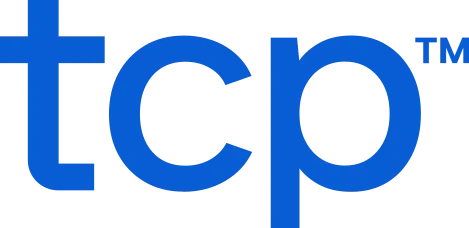Nobody likes losing out on margin that they’ve earned fairly.
Accurate job costing is an uncompromisable element in forecasting, planning, and budgeting efficiently. Yet you may still struggle with job costing, especially when your organization is stuck with:
- Error-prone labor tracking processes – Like manual entry for complex cost codes
- Outdated time tracking systems – These make tracking hours difficult
- A lack of integrations – Which leads to more payroll errors and increases compliance risk
Understanding how job costing works can help you create a better system that takes work off your plate instead of putting more on, like generating automated, accurate payroll reports.
Here, we’ll discuss everything you need to know about job costing, including what it is, why it’s important, who uses it, the calculation process, real-world examples, and where job costing software might come into play.
What is job costing?
Job costing is a process used to track the costs and revenue of a job or project.
It involves calculating hours worked, then breaking down the cost of the labor, materials, and overhead to compare estimated expenses against actual costs. Time and labor are often tracked using detailed cost codes, organized by project, subtask, work order, client, equipment, part number, etc. These codes require precision to ensure accurate invoicing, billing, and budgeting.
Industry and the types of projects your organization works on impact how you use job costing.
For example, a construction company might use job costing to bill clients accurately, while a university might use it to ensure incurred costs align with project budgets. When done right, it benefits your organization, your clients, and your employees alike.
What are job costing systems?
Job costing systems simplify complex cost tracking by automating the process of assigning expenses to specific jobs, tasks, or equipment.
With features like multi-level labor tracking, these systems clearly show how employee time is distributed across projects. The result is greater accuracy, faster reporting, and sharper insights, all of which help identify inefficiencies, improve productivity, and inform decision making.
Why is job costing important?
Effective job costing touches everything your organization does — from accuracy in your bottom line and labor compliance, to scheduling and even the greater employee work experience. It also benefits clients, as it allows more accurate, detailed billing.
Through accurate job costing, your organization can:
- Ensure accurate billing and invoicing – Many organizations rely on job costing to generate itemized client invoices. When time is tracked accurately (whether across roles, projects, or equipment), billing becomes easier, faster, and more transparent.
- Maximize profitability – By accurately tracking your (most likely) biggest expense, labor, you can bid more competitively on future work and avoid cost overruns or underperformance.
- Control costs – Job costing lets you compare labor cost tracking against budgeted estimates and adjust in real time. This visibility improves payroll accuracy and helps teams meet financial targets for jobs, projects, and/or grant initiatives.
- Make better management decisions – Timely, data-driven decisions are key to staying competitive. Job costing gives leaders a clear view of what’s working, what’s not, and where they can optimize.
TL;DR – While job costing is more common in certain industries than others, it’s an invaluable strategy for optimizing labor, improving employee scheduling, and other project-related costs.
What’s the difference between process costing and job costing?
Though process costing and job costing are related, they serve distinct purposes.
Job costing breaks down all costs related to a specific job or project. It’s ideal for one-off, customizable, or smaller-batch projects where expenses vary by task or team.
Process costing, on the other hand, calculates the per-unit cost of producing identical items at scale. It’s best suited for continuous manufacturing environments — like food processing or apparel production — where the cost to make each item is nearly the same. While process costing is primarily used in manufacturing, job costing is used in various industries.
Who uses job costing?
Because job costing improves cost efficiency, it’s valuable across many industries. Common users include:
- Advertising agencies – To break down costs by service type, such as design, video production, or strategy. For example, a client may be billed $600 for an overall project, broken down further into $250 per hour for graphic design work vs. $350 per hour for videography.
- Healthcare – Especially in home care, job costing tracks time spent per patient or location and improves healthcare scheduling efficiency.
- Retailers – Warehouses use it to track labor and equipment usage by customer or task.
- Engineering firms – Labor, materials, and overhead vary by job and must be tracked closely, as it’s crucial for both one-time engineering projects and longer-term consulting jobs.
- Transportation providers – Costs like driver wages, delivery times, and vehicle use all feed into profitability.
- Construction – Job costing helps them stay on budget, invoice accurately, and pay workers correctly.
- Manufacturing – Calculating the cost of labor for various roles, time spent using different equipment or working on projects for different clients, and other factors support profit margins on both high- and low-volume production runs.
- Higher education – Universities use job costing to track grant work and labor allocation across departments.
Some industries use job costing more than others, and the way an organization applies it depends on the type of work it does. But calculating it involves the same general process and challenges.
How do you calculate job costing?
Job costing calculations involve adding the costs of all of the resources required to create a product or complete a project. Here’s the process to calculate job costing in three simple steps:
1. Track labor costs
Labor cost calculations must account for:
- Pay rates (which vary by role)
- Shift differential pay or union rules
- Overtime pay, PTO, and bonuses
- Job codes by project, client, or equipment
Because of this complexity, labor costs are often the most difficult and critical component to get right. Errors here impact everything from customer billing, accurate time tracking, employee retention, and accurate pay.
2. Total up material costs
Materials include anything required to complete a job, such as:
- Raw materials (e.g., rubber, plastic)
- Packaging or shipping supplies
- Equipment or tools explicitly used for the job
Material costs are typically totaled per order, project, or client — a tennis shoe manufacturer, for instance, might include fabric, rubber, and plastic, as well as the machinery required for cutting, sewing, and assembling the shoes.
3. Calculate overhead
Overhead calculations involve estimating a multitude of indirect variables. While some overhead costs are predictable, others can vary by project or change over time. To calculate overhead, organizations add the costs of all of their operational expenses.
In our example of the tennis shoe manufacturer, overhead costs may include:
- Rent for office spaces and manufacturing facilities
- Internet service
- Utilities
- HVAC
- Marketing and advertising
- Insurance
- Legal fees
Some overhead is fixed and others fluctuate by job. To maintain accuracy, it’s important to revisit these assumptions regularly.
Job costing example
Let’s revisit job costing for our tennis shoe manufacturer.
Scenario: ABC Shoe Company wants to produce 10,000 pairs of a new shoe over two months (8 weeks / 40 working days) for their spring release. This includes a project manager (earnings: $3,000 per week), a warehouse manager and supply chain manager (earnings: $300 per day), and two facility employees (earnings: $150 per day).
Labor costing:
- 1 project manager: $3,000/week x 8 weeks = $24,000
- 2 managers (warehouse + supply chain): $300/day x 40 days x 2 = $24,000
- 2 facility employees: $150/day x 40 days x 2 = $12,000
- Total labor: $60,000
Next, the company will calculate the material costs in job costing by adding in material expenses.
Material costing:
- Raw materials (rubber, plastic, fabric, packaging): $15,000
- Equipment (sewing machine) + supplies: $10,000
- Total materials: $25,000
Finally, the organization calculates overhead for manufacturing the new shoes.
Overhead costing:
- Facility rent, advertising, utilities, etc.: $15,000
- Total overhead: $15,000
Total project cost: $100,000
Of course, the above example simplifies how job costing might shake out in the real world. The shoe manufacturer likely has several other projects to calculate, track, and report, increasing the complication of job costing in reality.
Because labor expenses are complex, this manufacturer likely uses dedicated time tracking software to calculate labor costs based on specific codes. Automating these calculations makes it easier for the organization to collect data, improve processes, bill customers accurately, and pay employees correctly.
Benefits of using time tracking software for job costing
Trying to manage job costing with time tracking spreadsheets or basic tools might seem cost-effective — but it can result in lost revenue, poor data, and extra work from employees to managers.
Purpose-built software helps organizations:
- Increase data accuracy – Automatically track hours worked by job, role, and location—even across multiple cost codes.
- Simplify reporting – Run detailed reports by employee, job, department, or timeframe. Many solutions support customized dashboards or analytics to improve process KPIs.
- Improve payroll and compliance – Reduce payroll errors and support audit-readiness by eliminating manual data entry.
The best tools are integrated into a time tracking system, so data flows seamlessly between time and attendance solutions, payroll, and ERP/HCM platforms.
Automate job costing with time tracking software
Accurate job costing drives profitability, performance, and employee satisfaction — but only if the tools behind it can keep up.
Time tracking software like TCP helps you:
- Create, assign, and customize job codes and costing levels seamlessly
- Grant easy access to the cost codes relevant to specific roles
- Incorporate multi-level job costing codes for in-depth reporting
- Import job costing codes and data from ERP and HCM systems
- Run pre-built or custom reports to evaluate costing by factors
- Use precise job costing data for billing, invoicing, and reporting
- Offer easy time collection options to switch between codes
Whether your employees are in the field, at a desk, or switching tasks throughout the day, TCP provides flexible, compliant solutions to meet your organization’s needs. At the end of the day, job costing should be reinforcing your bottom line, not taking away from it.
TCP Software’s employee scheduling and time and attendance solutions have the flexibility and scalability to suit your business and your employees, now and as you grow.
From TimeClock Plus, which automates even the most complex payroll calculations and leave management requests, to Humanity Schedule for dynamic employee scheduling that saves you time and money, we have everything you need to meet your organization’s needs, no matter how unique. Plus, with Aladtec, we offer 24/7 public safety scheduling solutions for your hometown heroes.
Ready to learn how TCP Software takes the pain out of employee scheduling and time tracking? Speak with an expert today.


